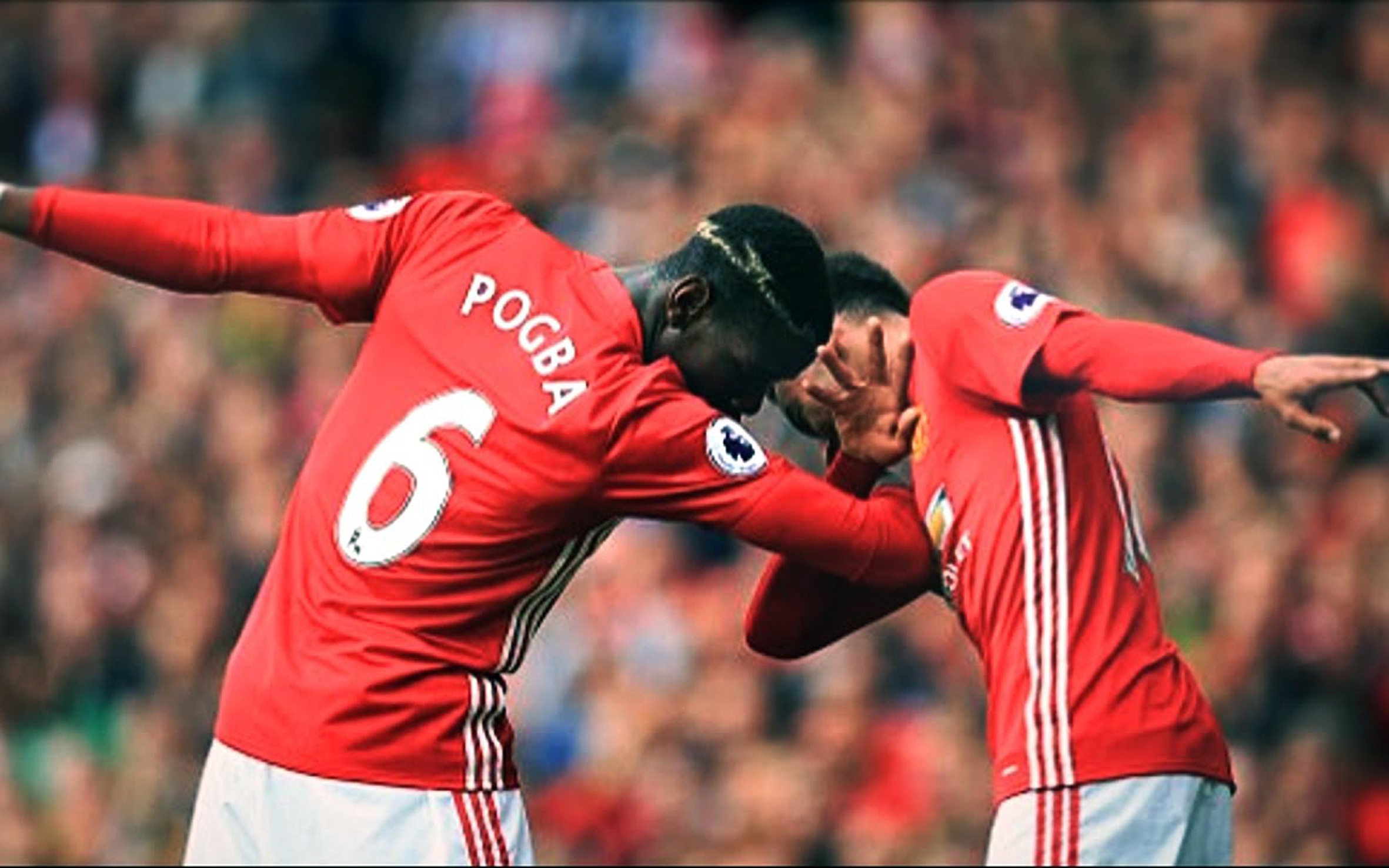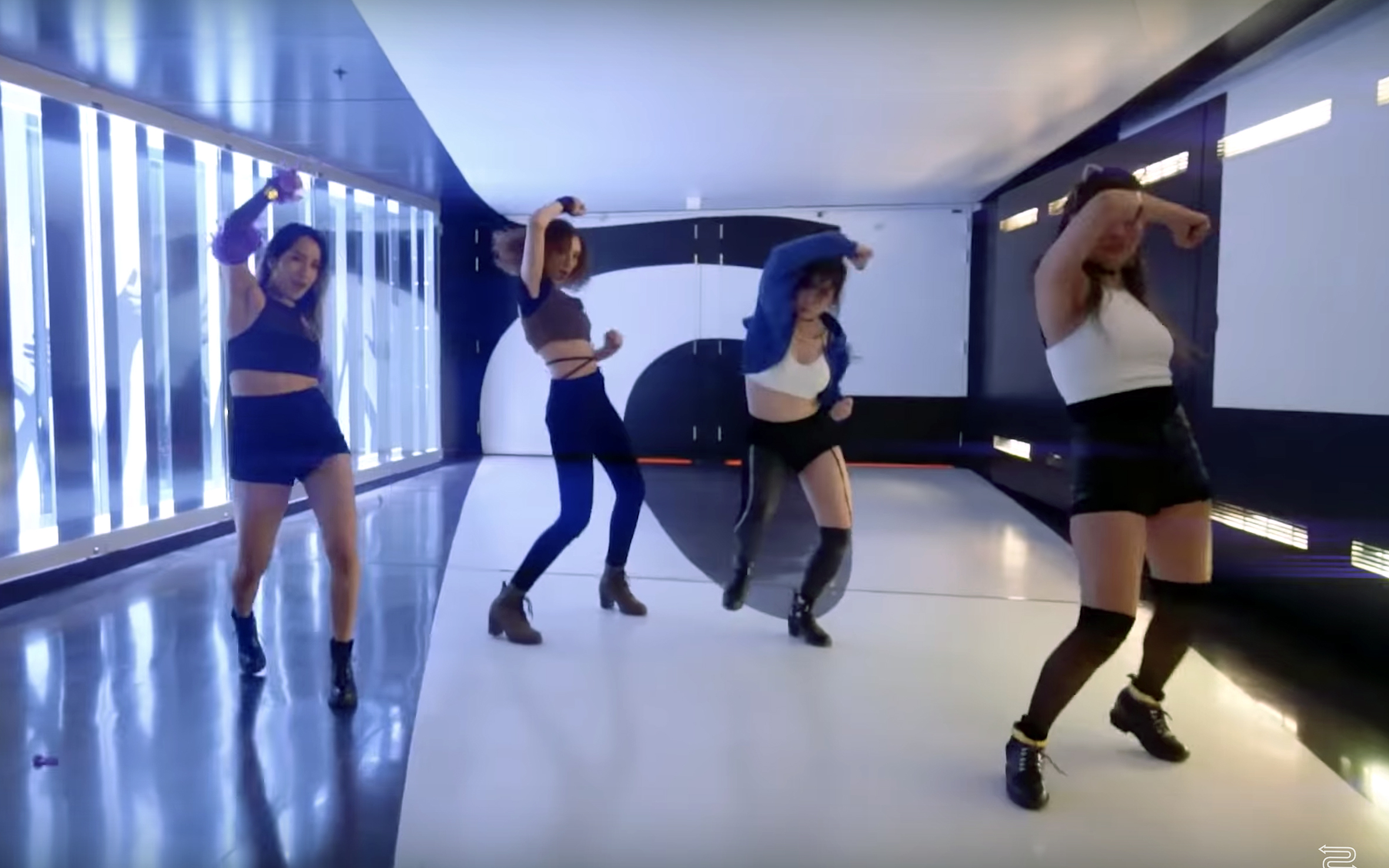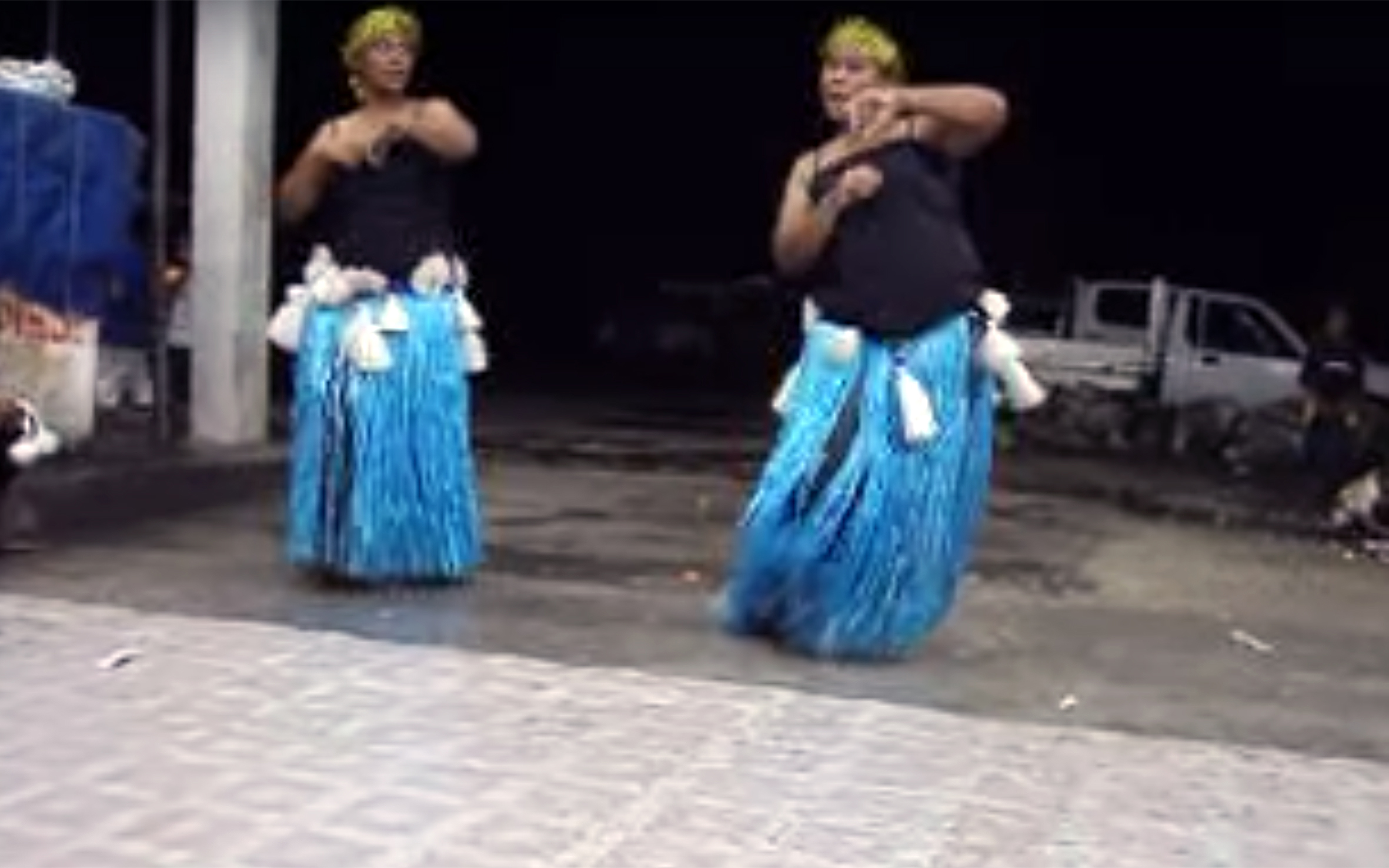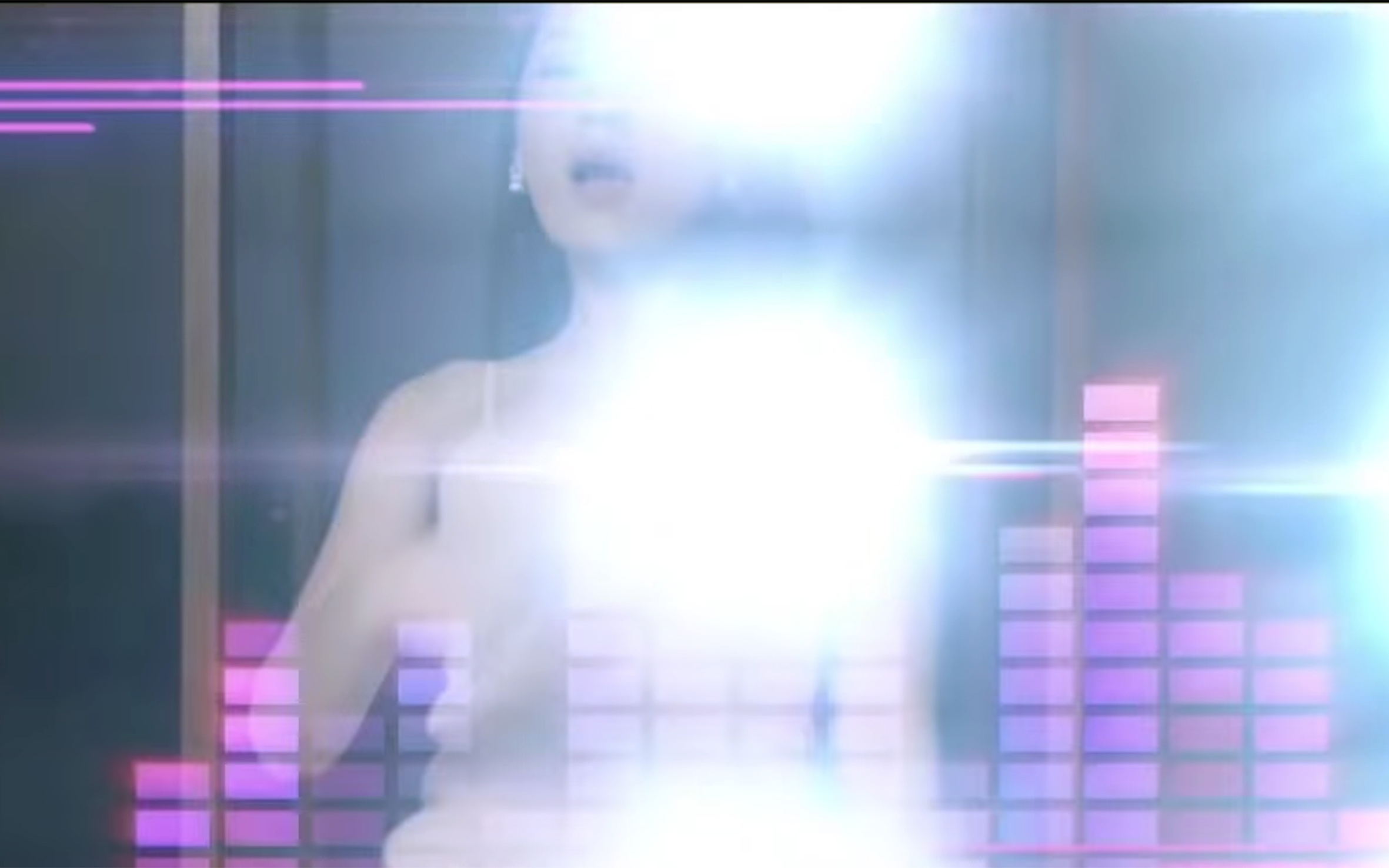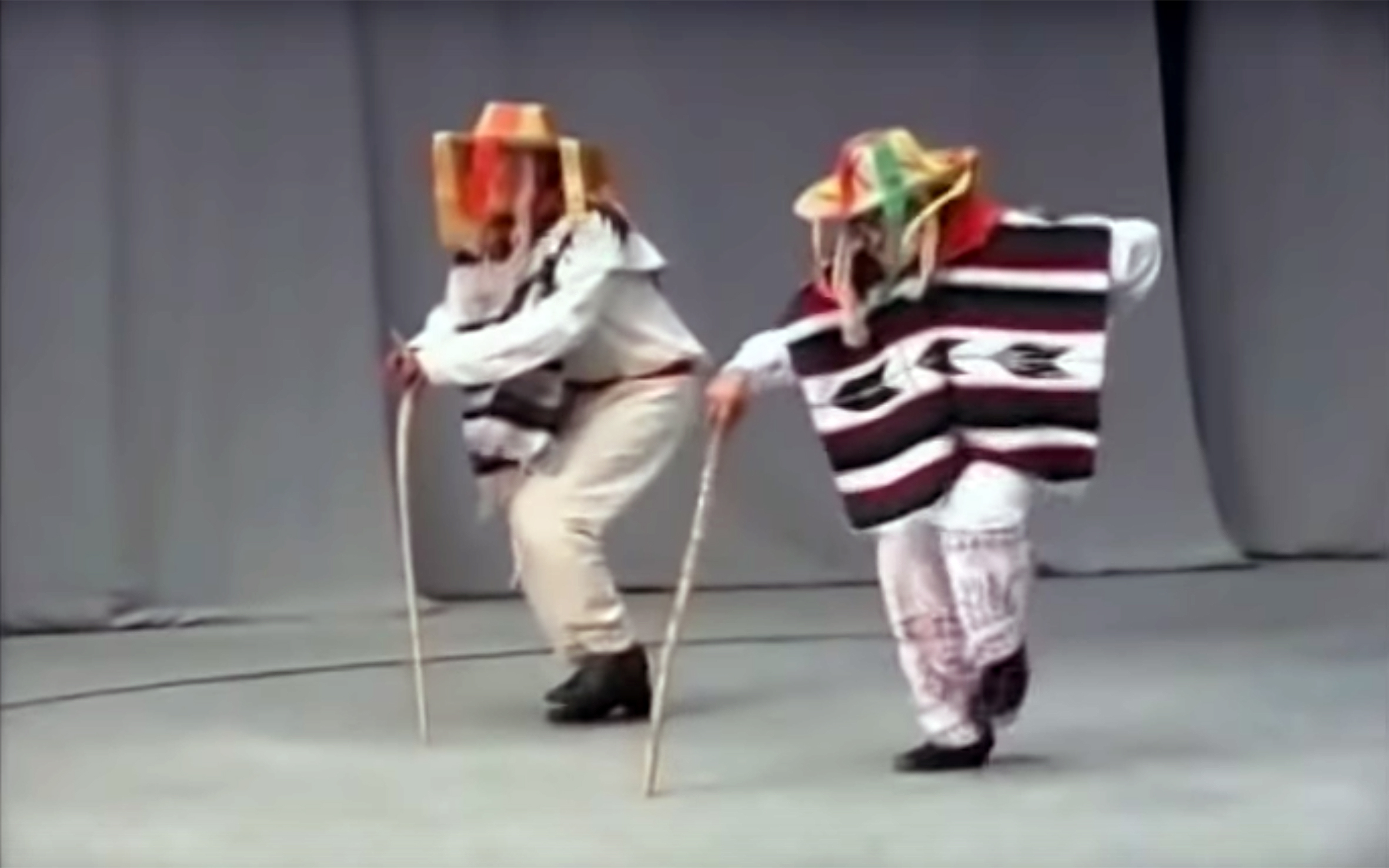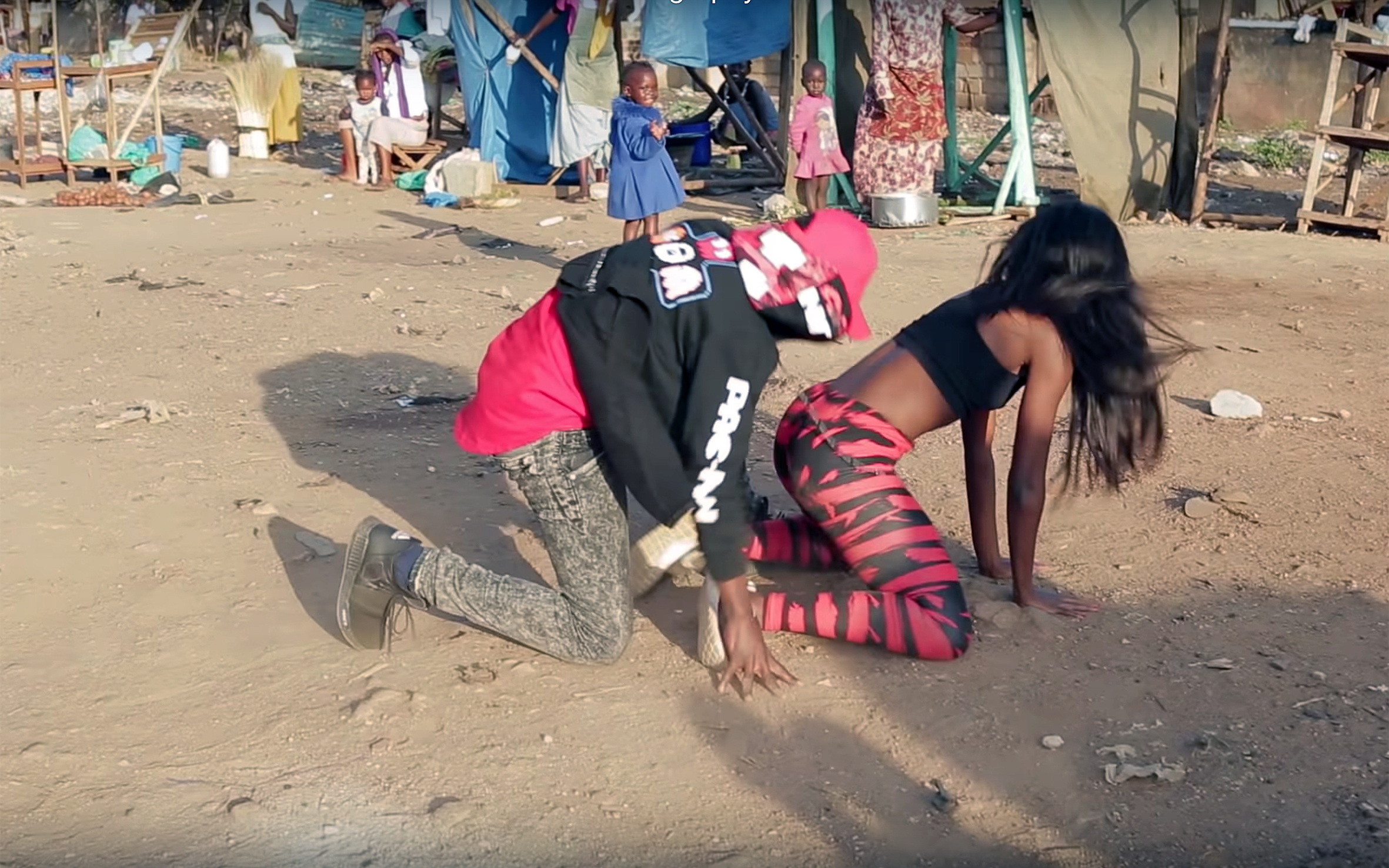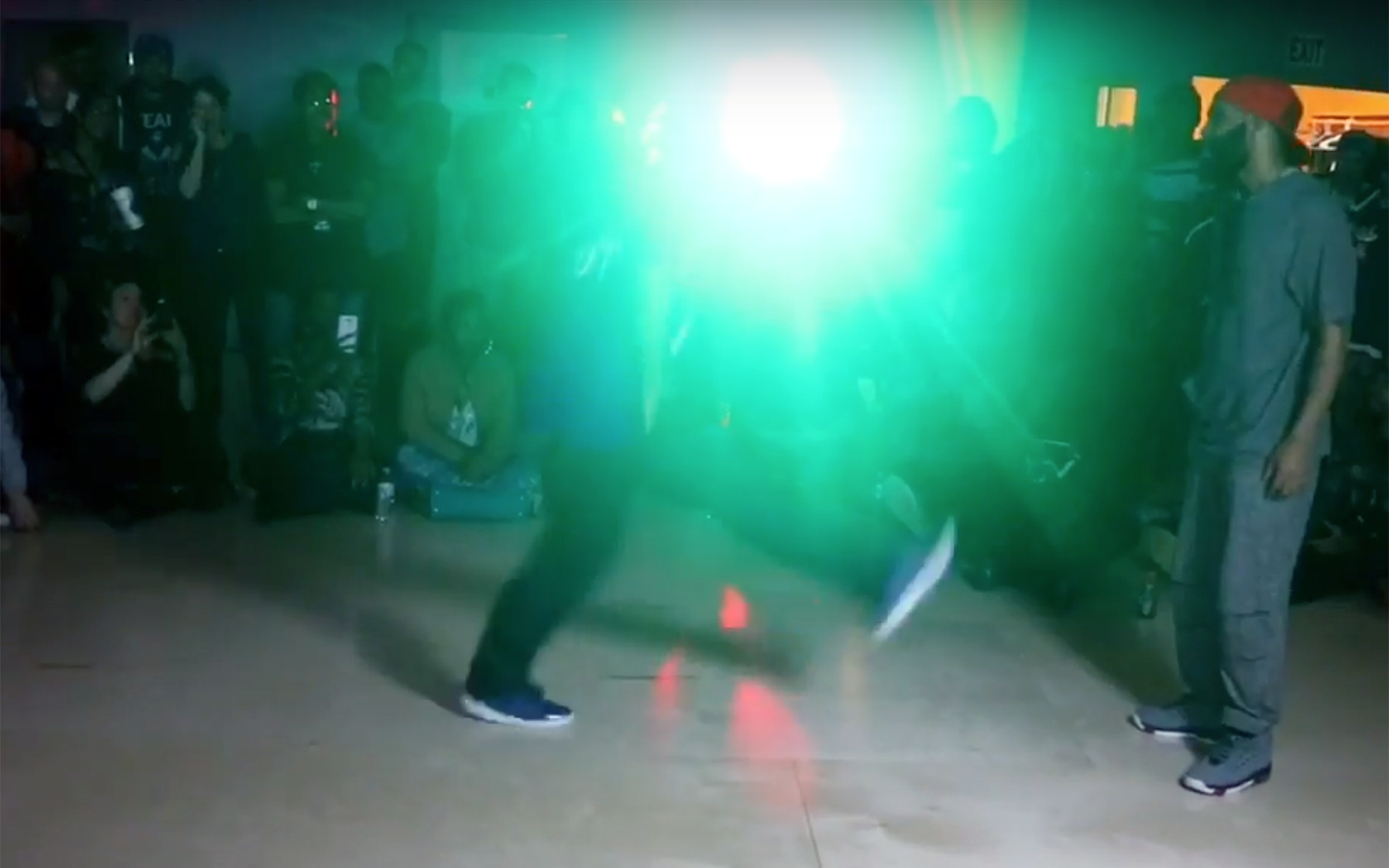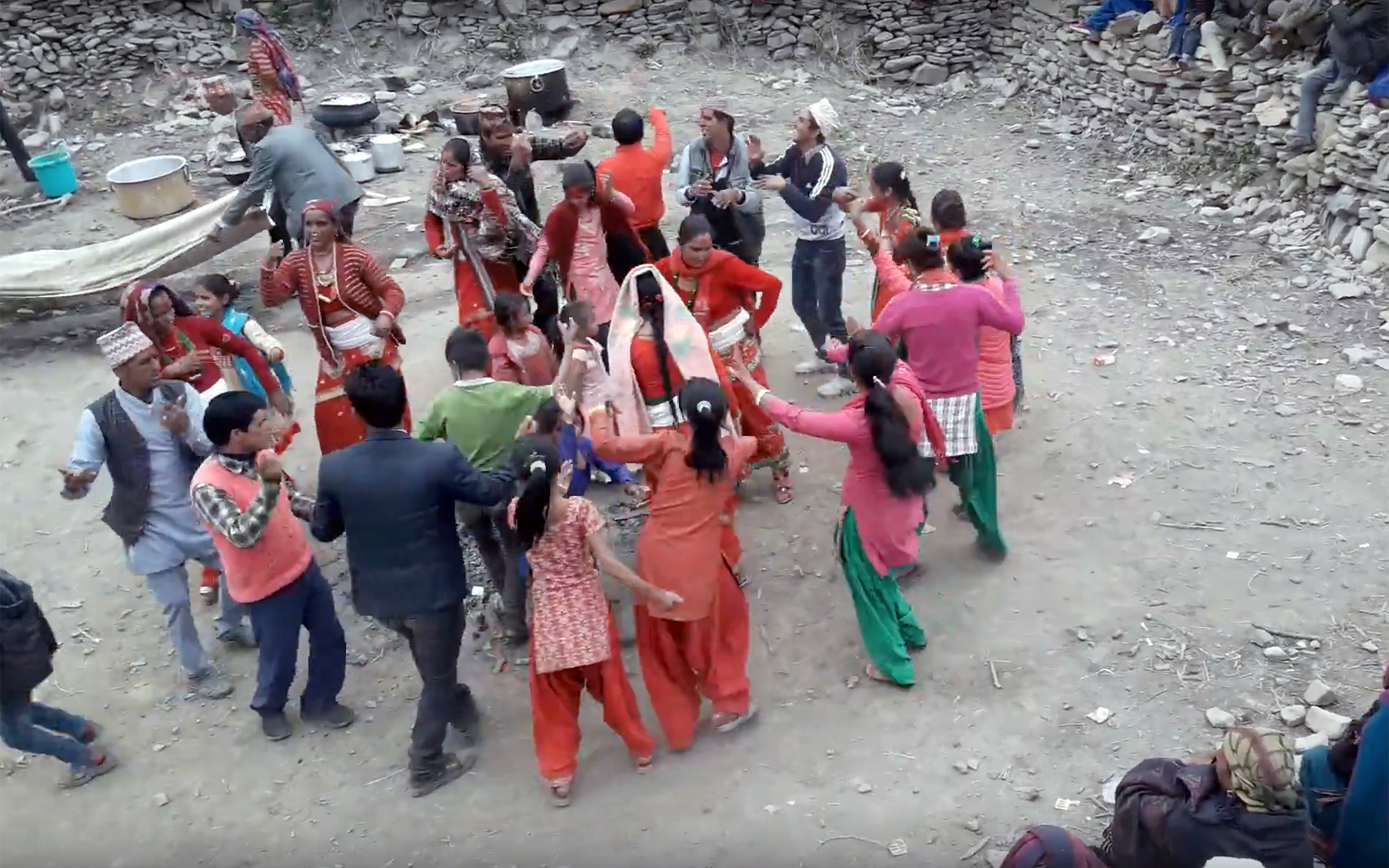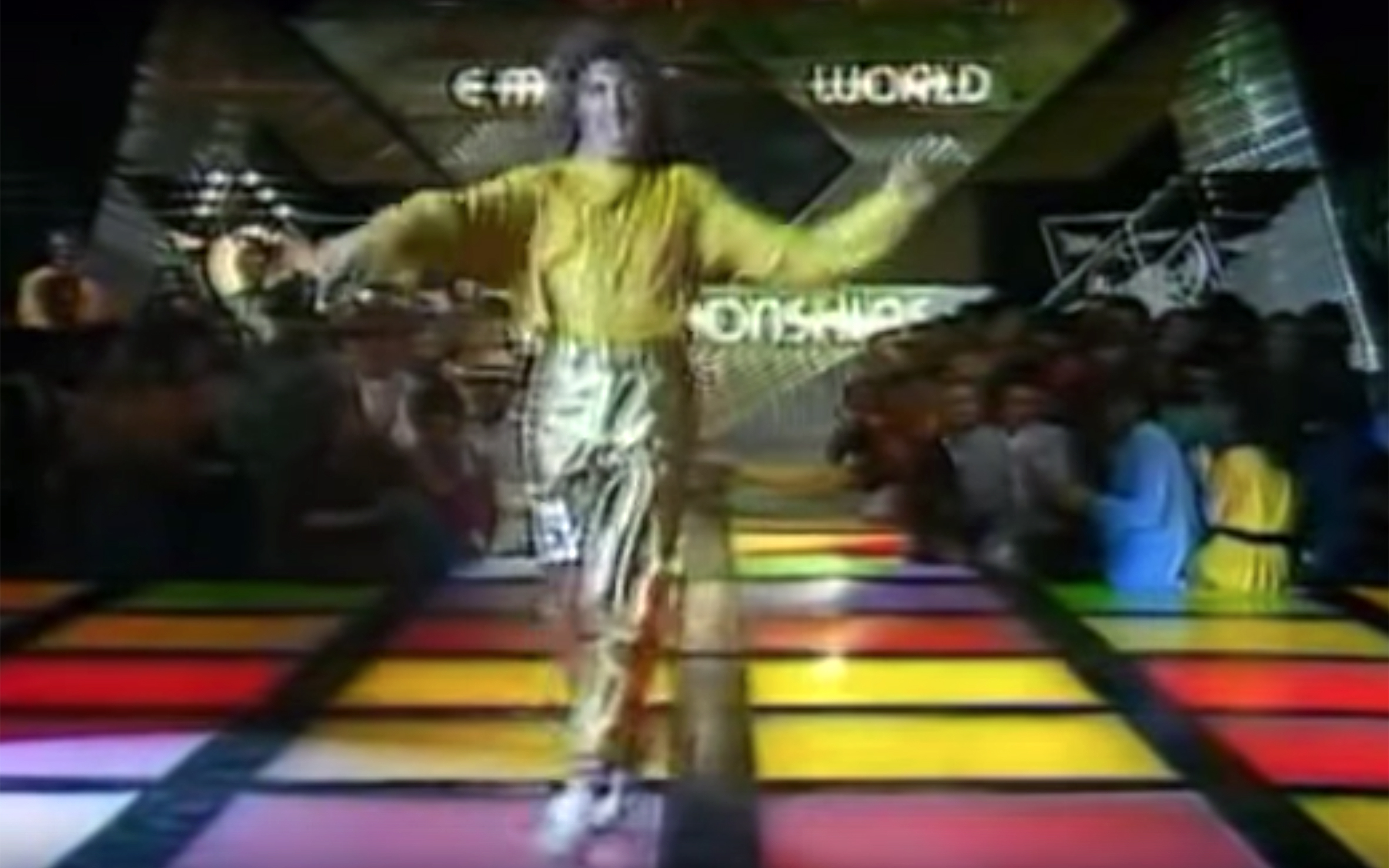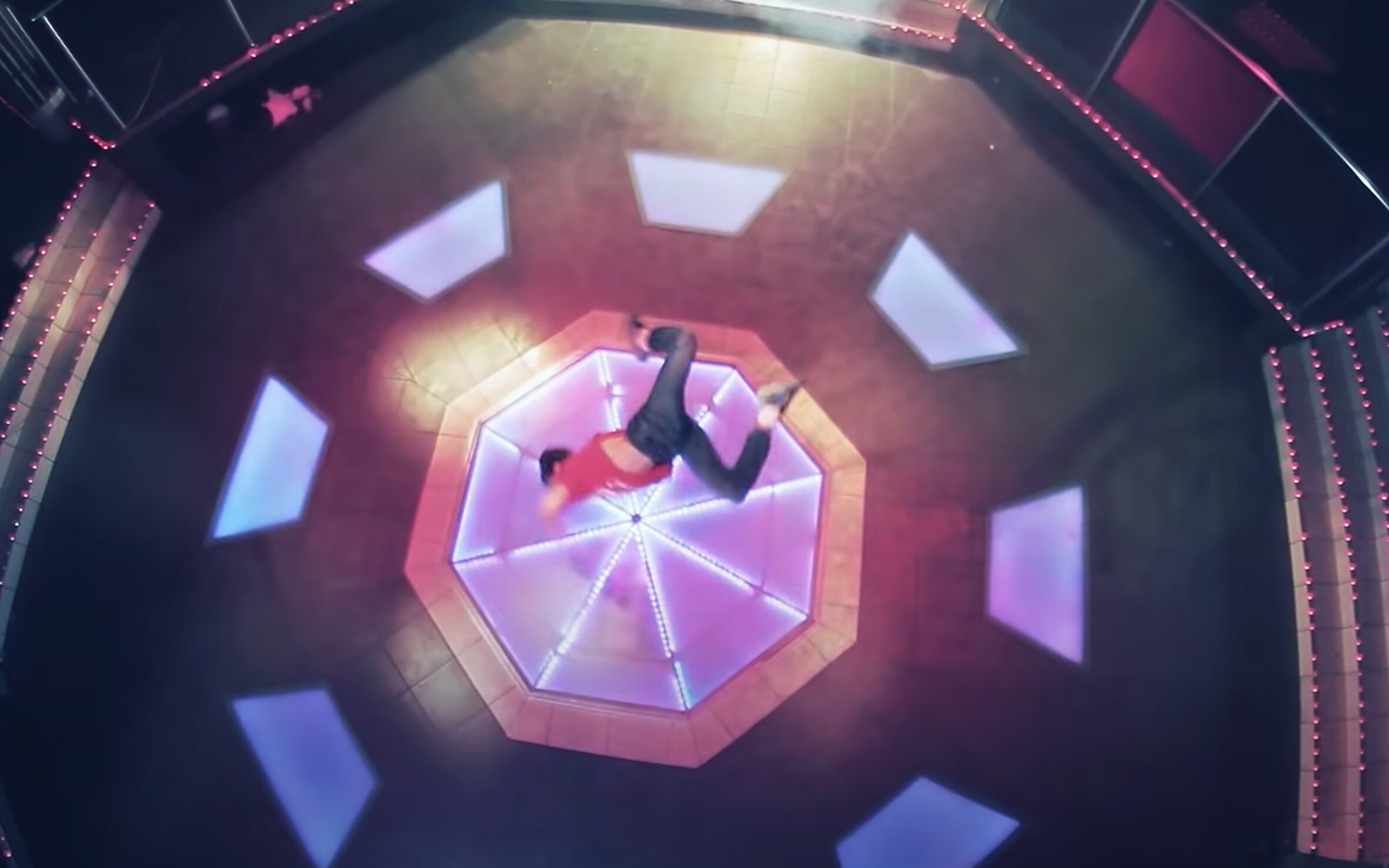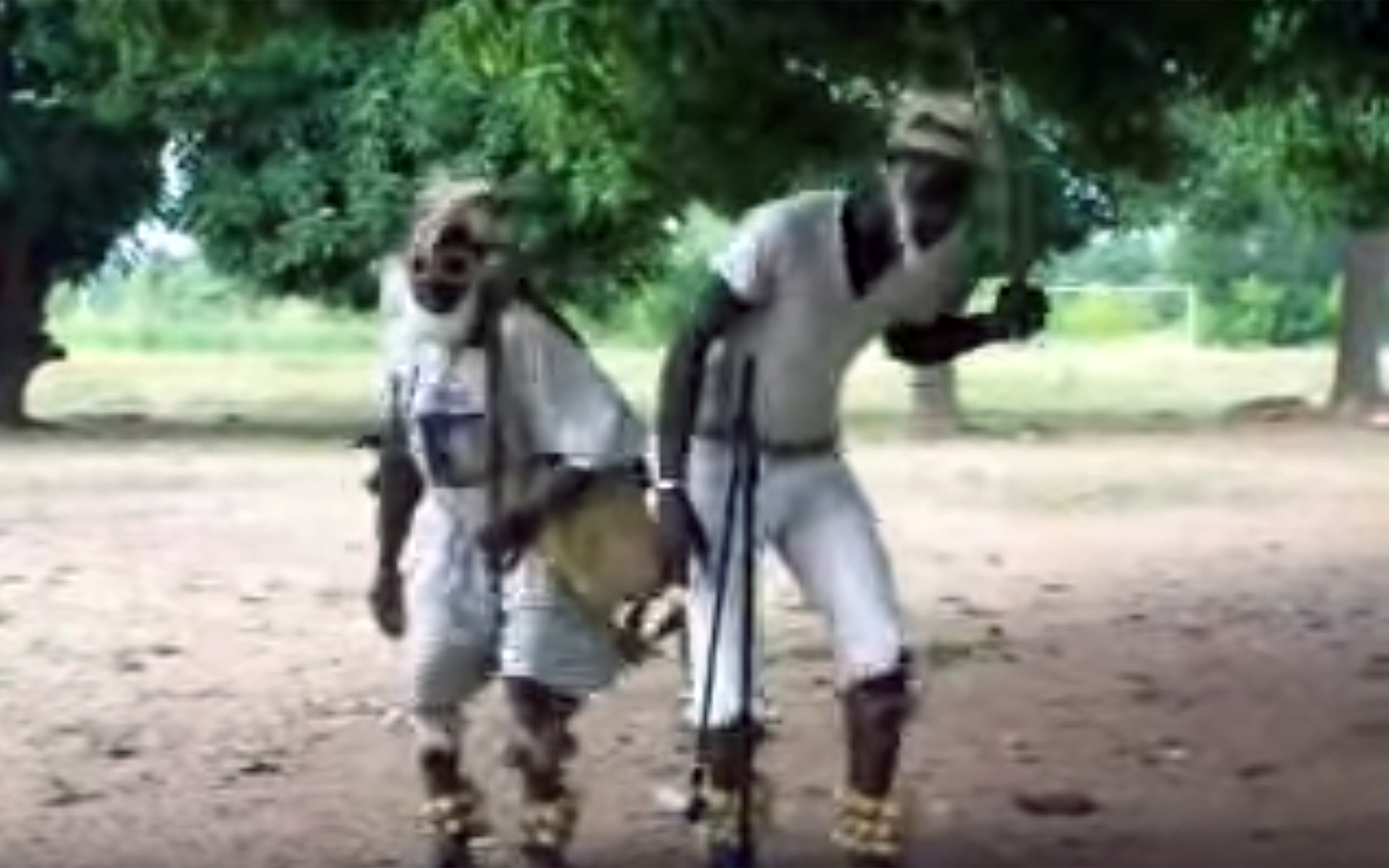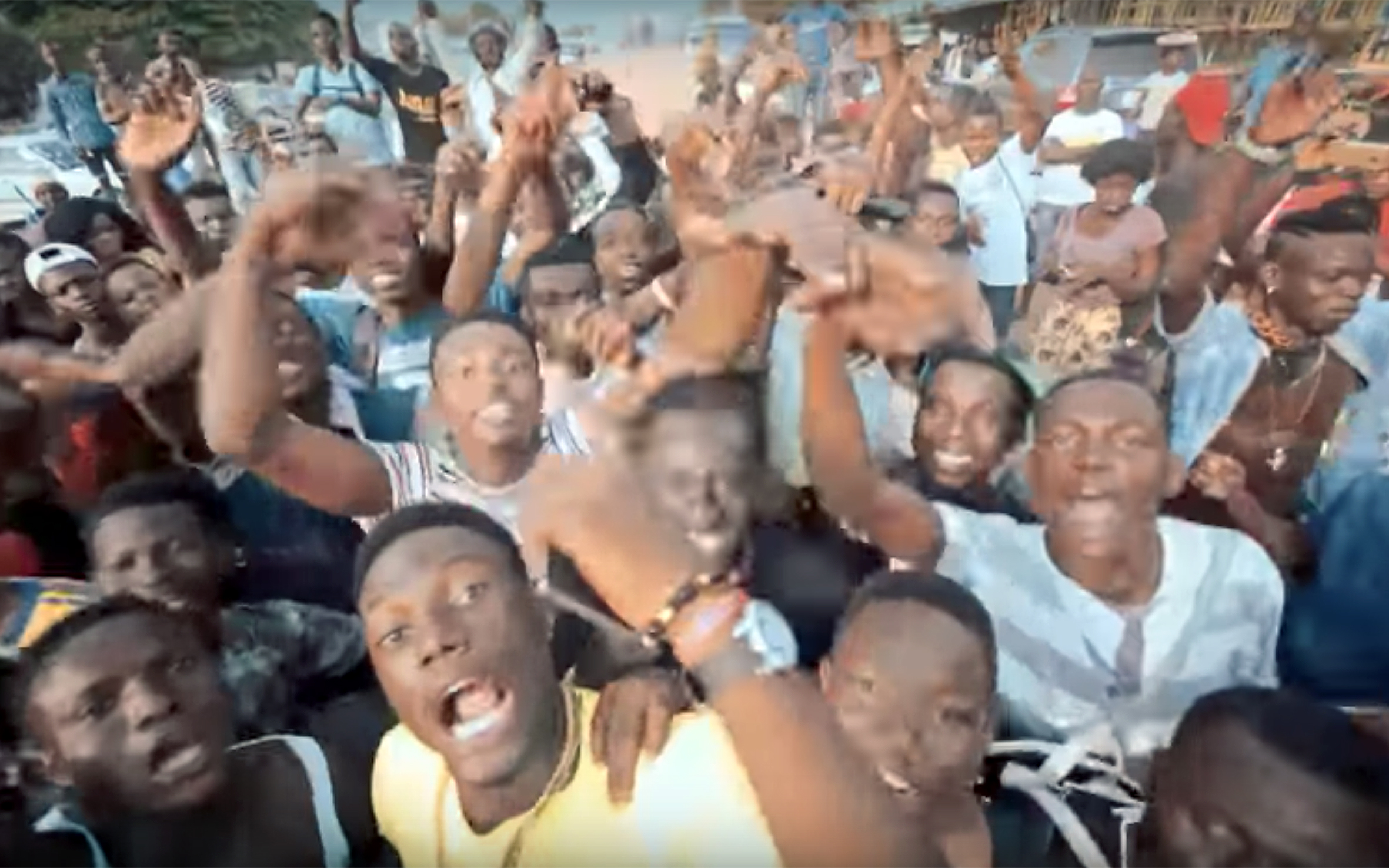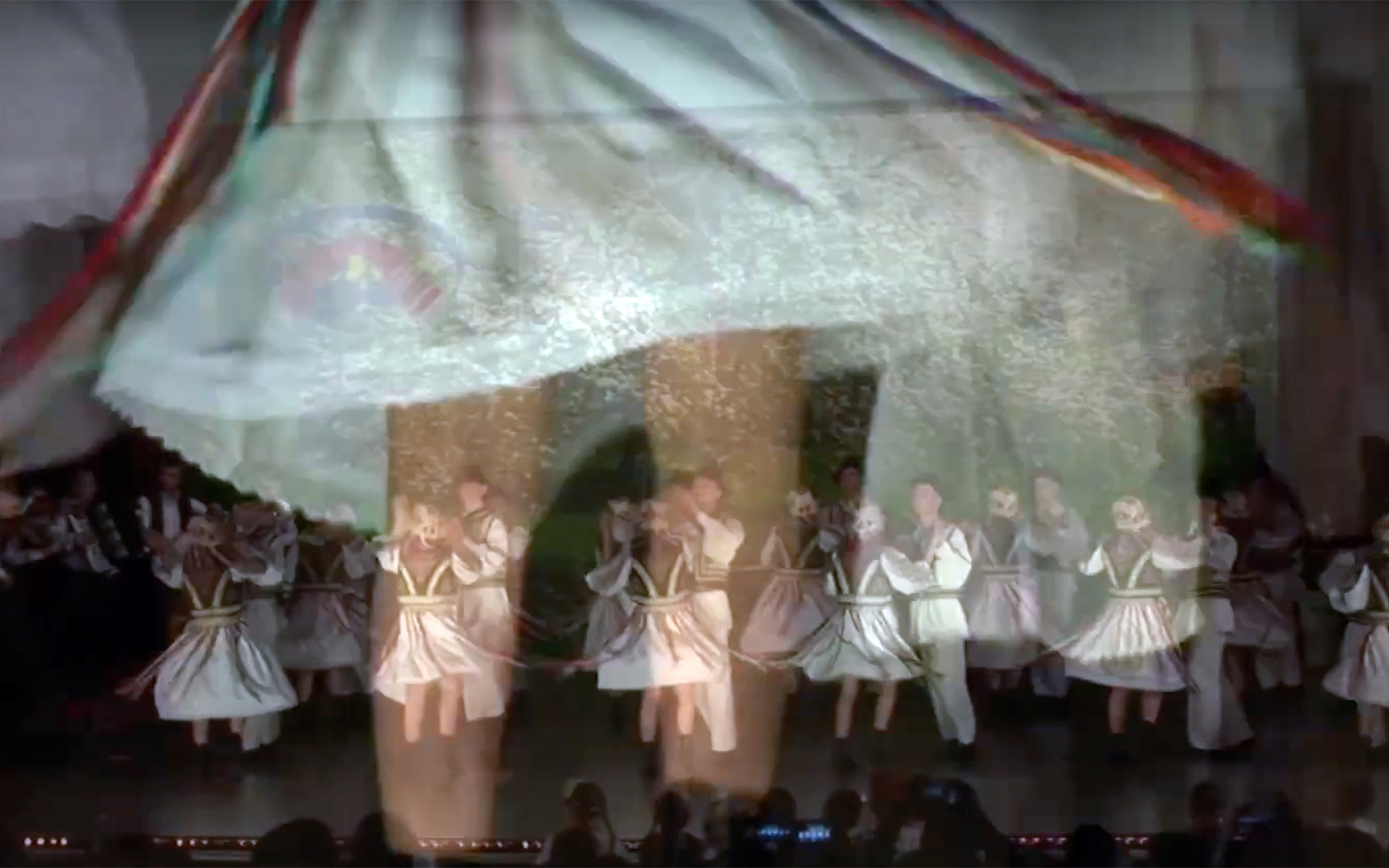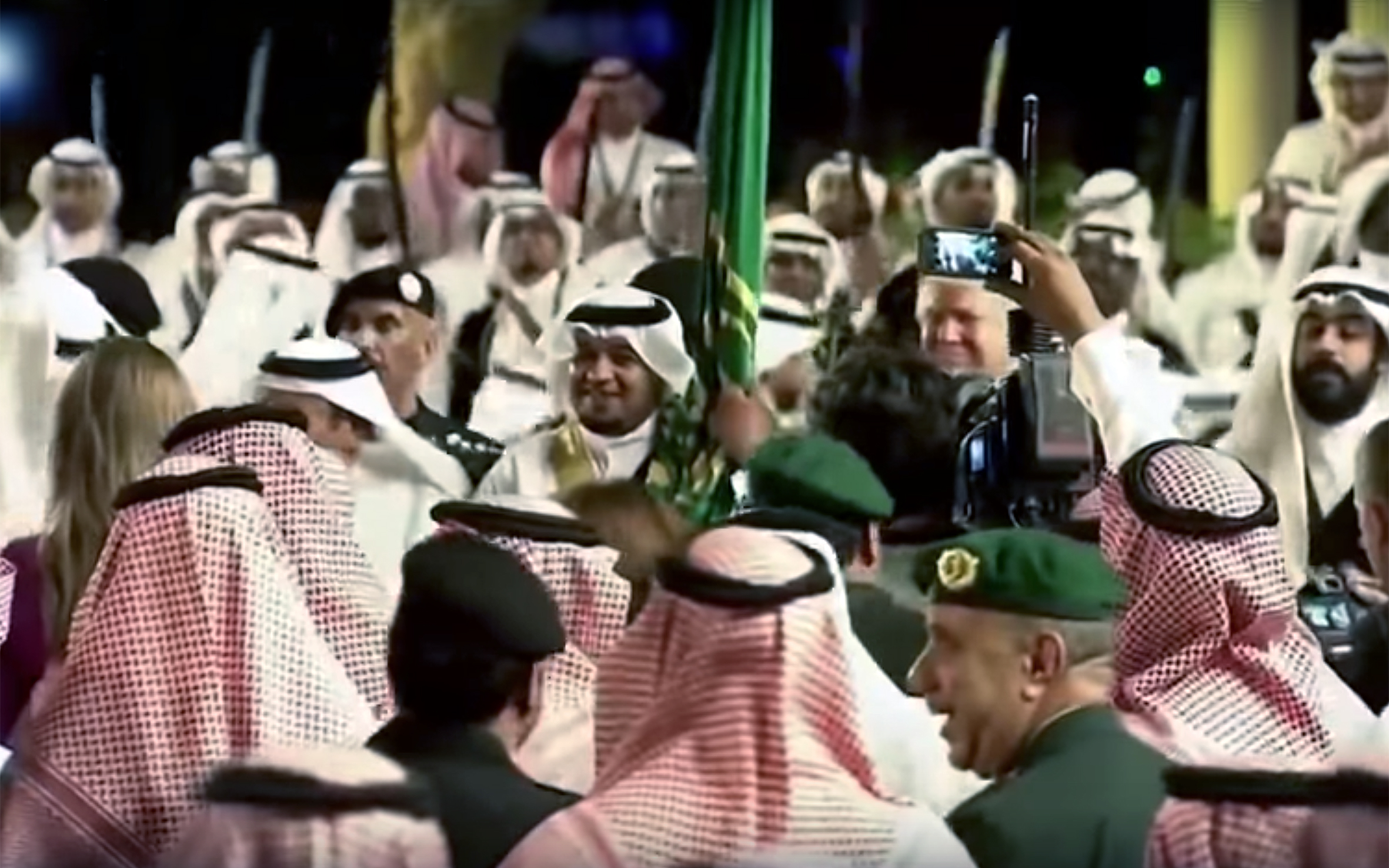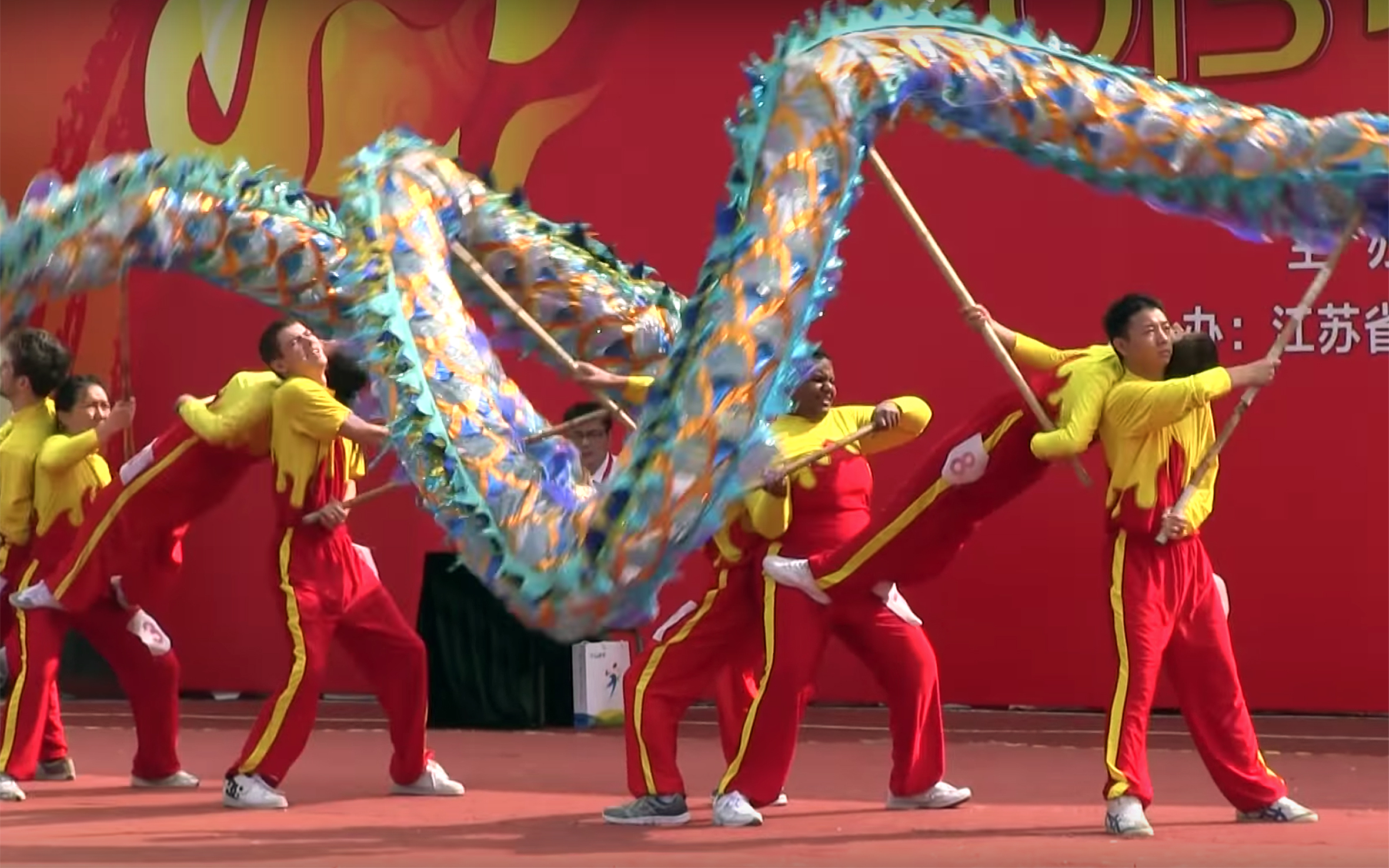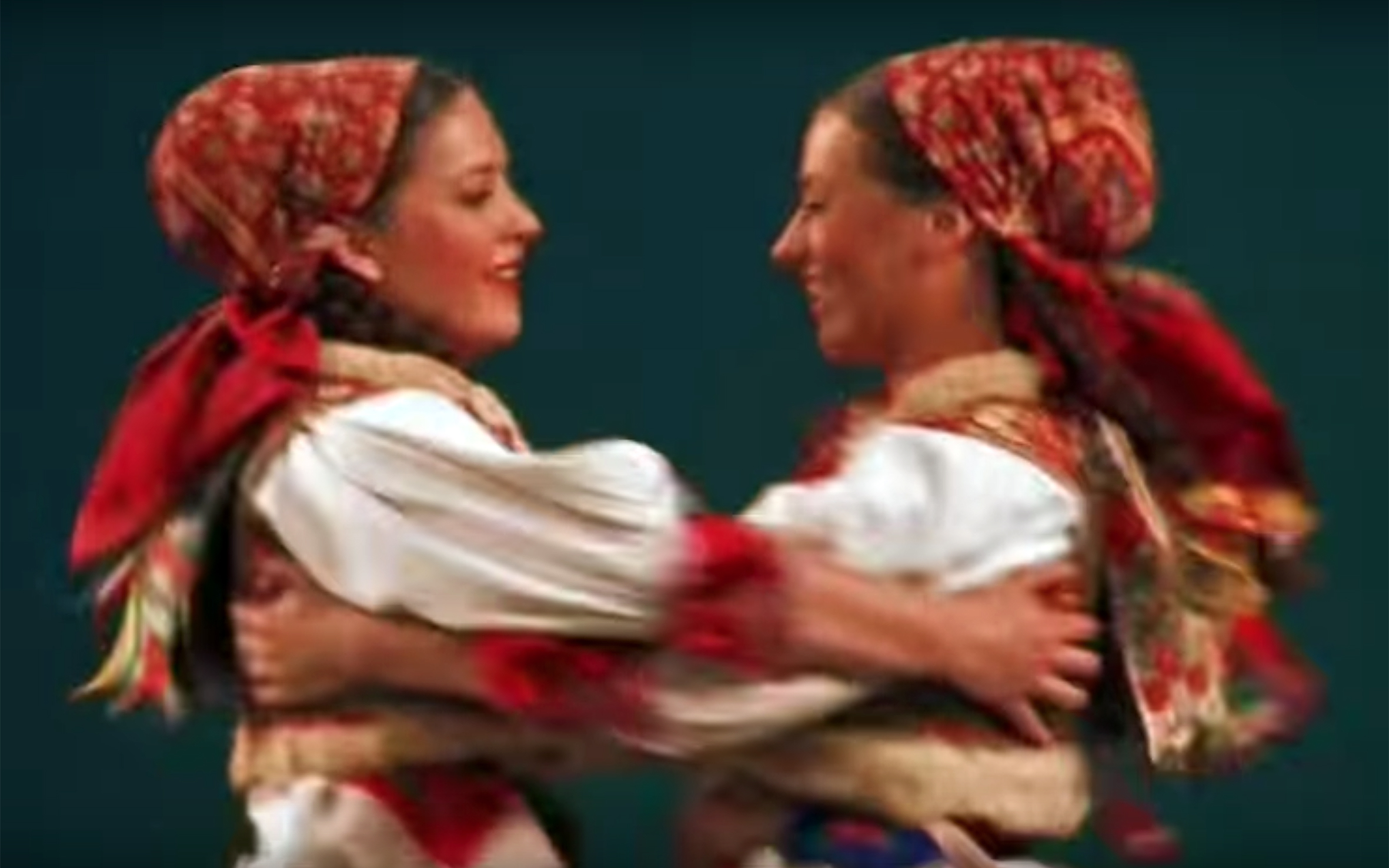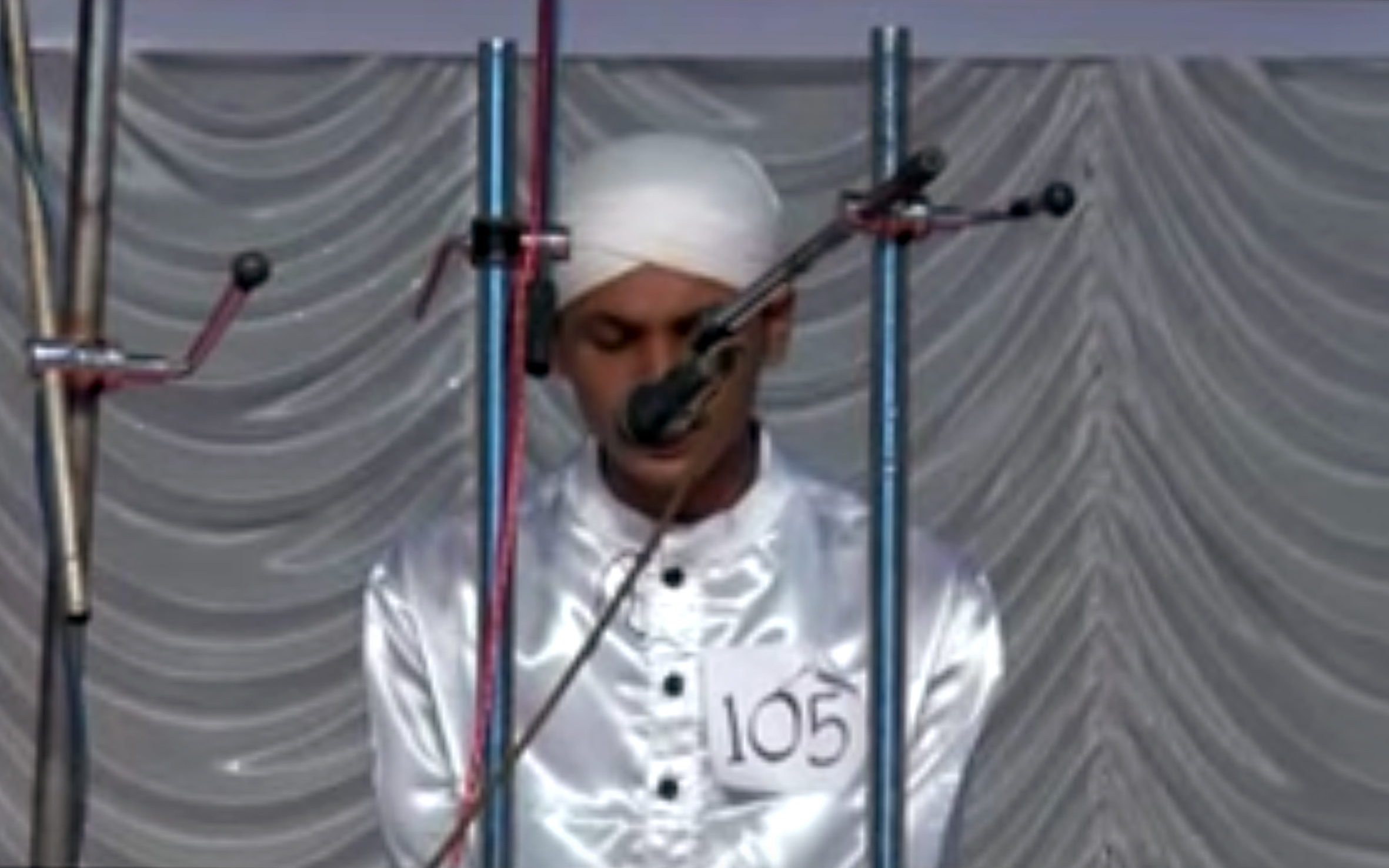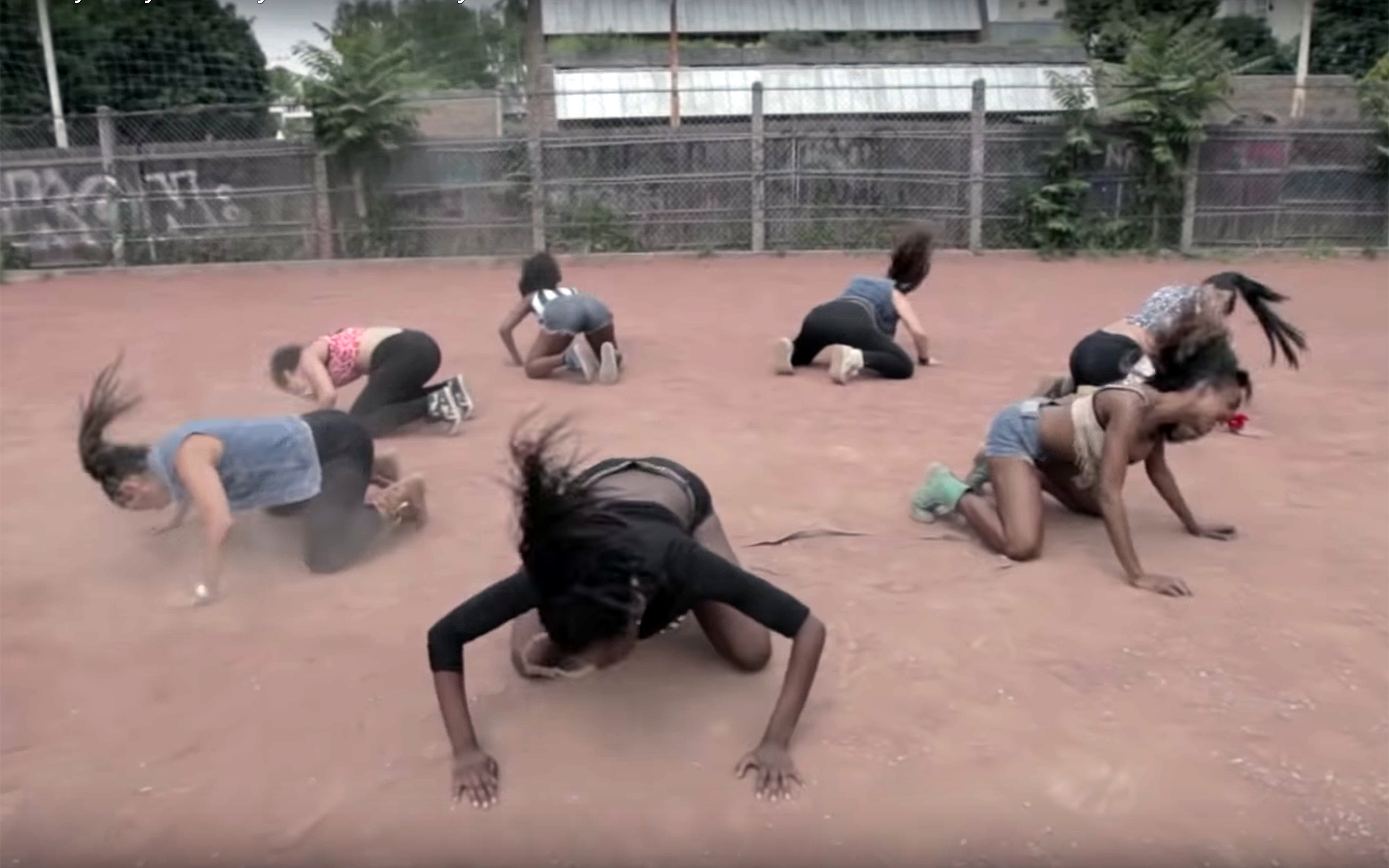206.DAB / Global
DAB is a simple dance move in which a person drops the head into the bent crook of a slanted arm, typically while raising the opposite arm in a parallel direction but out straight; both arms are pointed to the side and at an upward angle. Since 2015, it has also been used as a gesture of triumph or playfulness, becoming a youthful American dance fad and Internet meme. The move looks similar to someone sneezing into the “inside” of their elbow. As a victory dance it became viral on the Internet at the beginning of 2016. During the World Cup victory of France in 2018 French soccer player Paul Pogba performed a very famous Dab dance on the football pitch.
207.Dabke / Palestine / Syria / Lebanon / Jordan
DABKE is an Arab folk dance native to the Levant. It combines circle dance and line dancing, and is widely performed at weddings and other joyous occasions. The line is formed from right to left, with the dabke leader leading the line, alternating between facing the audience and the other dancers. The name originated from the Arabic word meaning “stamping of the feet”. When first created, dabke dance was practiced by people of the villages and towns of old Palestine— Lebanon, Syria and parts of Jordan. In contemporary times dabke has special meaning to the Palestinian people, signifying aspirations, struggle and the history of Palestine, making it one of the most culturally important forms of art.
208.Dalkhai / India
DALKHAI is the most popular folk dance of Western Odisha. The main themes of this dance are Radha-Krishna, Ramayana, Mahabharata. The men shout the word “Dalkhai Bo!” at the beginning and end of each stanza sung in the dance— that is why the dance is known as the Dalkhai. The men dancing along with the girls address them during the performance and flirt with them. Women and girls wear a colorful printed Sambalpuri saree. They also tie a scarf on their shoulders holding the ends in both the hands. Various traditional pieces of jewellery such as the necklace, bangles, etc. complete the look of the performers. Dalkhai is performed at various festivals such as Bhaijiuntia, Phagun Puni, Nuakhai.
209.Dama / Mali
DAMA is a masked dance performed by the Dogon people from Mali. It is believed to create a bridge into the supernatural world, which allows the dead to cross over into peace. Every five years, Dama memorial ceremonies are held to accompany the dead into the ancestral realm and restore order to the universe. During the Dama celebration, Youdiou villagers circle around stilt dancers. The dance and costumes imitate a long-legged water bird. The dancers execute difficult steps while teetering high above the crowd. Through such rituals, the Dogon believe that the benevolent force of the ancestors is transmitted to them.
210.DANCE DANCE REVOLUTION / Global
DANCE DANCE REVOLUTION also known as DANCING STAGE in earlier games in Europe, Central Asia, Middle East, Africa, South Asia and Oceania, and also some other games in Japan, is a music video game series produced by Konami. Introduced in Japan in 1998 and released in North America and Europe in 1999, it is the pioneering series of the rhythm and dance genre in video games. Players stand on a “dance platform” or stage and hit coloured arrows laid out in a cross with their feet to musical and visual cues. Players are judged by how well they time their dance to the patterns presented to them and are allowed to choose more music to play if they receive a passing score.
211.Dancehall / Global
DANCEHALL is a dance style performed to the Jamaican popular music with the same name, originated in the late 1970s. Initially, dancehall was a more sparse version of reggae. In the mid- 1980s, digital instrumentation became more prevalent, changing the sound considerably, with digital dancehall becoming increasingly characterised by faster rhythms. Popularity of dancehall has spawned dance moves that help to make parties and stage performances more energetic. Dancing is an integral part of bass culture genres. As people felt the music in the crowded dancehall venues, they would do a variety of dances. Eventually, dancehall artists started to create songs that either invented new dances or formalised some moves done by dancehall goers. Many dance moves seen in hip hop videos are actually variations of dancehall dances.
212.Dance Healing / Global
DANCE HEALING is one of the early uses of dance, which may have been a precursor to ecstatic trance states in healing rituals. Dance is used for this purpose by many cultures from the Brazilian rainforest to the Kalahari Desert. The medieval European Danse Macabre was thought to have protected participants from diseases, yet the hysteria and duration of this type of dance sometimes led to death from exhaustion. Another example comes from a Sinhalese legend from Sri Lanka— Kandyan dances originated 2500 years ago from the magic dance ritual that broke the spell on a bewitched king and cured him of a mysterious illness. Nowadays, the healing power of dancing is used in various therapeutic practices.
213.DANCE-POP / Global
DANCE-POP is a dance style performed to the pop and dance subgenre that originated in the early 1980s. It is generally uptempo music intended for nightclubs with the intention of being danceable but also suitable for contemporary hit radio. Developing from a combination of electronic dance music and pop music, with influences of disco, post-disco and synth-pop, it is characterised by strong beats with easy, uncomplicated song structures, which are generally more similar to pop music than the more free-form dance genre, with an emphasis on melody as well as catchy tunes.
214. DANCE OF A FISH / Nauru
DANCE OF A FISH is a traditional dance coming from Nauru, a tiny island country in Micronesia, northeast of Australia. It is danced to celebrate the catch of fish, because fishing is an integral and important part of Nauru living and culture. After the dance, the dancers and the community would eat the fish.
215.Dances of Universal Peace / Global
DANCES OF UNIVERSAL PEACE (DUP) are a spiritual practice employing singing and dancing the sacred phrases of the world religions, with the intention to raise consciousness and promote peace between diverse religions according to one stated goal. The DUP are of North American Sufic origin. They combine chants from many world faiths with dancing, whirling, and a variety of movements with singing. Five to 500 dancers stand in a circle, often around a leader and musicians with acoustic instruments in the center. All dances are participatory and spectating is somewhat discouraged because joy is the goal, as opposed to the technical performance of specified dance steps or forms. For lyrics, dances borrow inspirational poetry, quotes and chants, which are sung as the dance is performed.
216.DANCE WITH BABIES / Global
DANCE WITH BABIES is a dance performed mostly by parents holding their babies on their chest. It is common in many cultures all around the world.
217.Dancing procession of Echternach / Luxembourg
DANCING PROCESSION OF ECHTERNACH is an annual Roman Catholic dancing procession held at Echternach, eastern Luxembourg—the last traditional dancing procession in Europe, held every Whit Tuesday in the streets of the city. It honors Willibrord, the patron saint of Luxembourg, who established the Abbey of Echternach. Large tourism industry has developed around the procession with many thousands of pilgrims coming from around the world. The event begins in the morning at the bridge, with a sermon delivered by the parish priest. The procession is formed by several dozen alternating groups of musicians and pilgrims. They move through the town towards the basilica. Musicians play traditional melodies and pilgrims, in rows of four or five abreast, holding the ends of white handkerchiefs, dance or jump from left to right.
218.Dandi Naach / Nepal
DANDI NAACH is a traditional dance from Nepal, also known as PHAGU NAACH because it is mainly performed during Phagu Purnima festival. It is performed by hitting two sticks between the partners in a particular pattern. It is mainly popular in Terai region of Nepal, as it originated from the Tharu community culture and traditions.
219.Dangdut / Indonesia
DANGDUT is a name for Indonesian pop music. The songs are often highly sexual in nature, and singers often dress in provocative miniskirts and high heels. Music is produced by modern instruments such as guitar, drums, electric organ and piano to produce fast catchy beats. Although the conservative Muslim population of Indonesia condemns the “pornographic” nature of Dangdut performance, it is still wildly enjoyed throughout the country especially as party entertainment, and was even nationally broadcasted on the American-Idol-inspired “Dangdut Academy”. Dance moves associated with Dangdut are influenced by American pop, K-pop, and Bollywood. Dangdut is also a common background music to aerobics classes and Zumba fitness.
220.Danza del Venado / Mexico
DANZA DEL VENADO, also called DANCE OF THE DEER, is a ritual dance celebrated by the natives of Sonora and Sinaloa, the yaquis. The Dance of the Deer is a hunting dance of the white-tailed deer, which is seen as a deity in the culture of the people of Sonora and Sinaloa, by the paskolas (hunters). It is believed that the music and lyrics of the dance must have transited with very few changes from the pre-Hispanic times to the present day. On the head the lead dancer wears a stuffed deer head with colored ribbons or natural flowers, fastened with straps under the chin, and on the neck rosaries or necklaces of white chaquira with medals. The torso is naked. Depending on the festivity in which the dance is performed, there may be other characters such as coyotes or hunters.
221.Danza de los Viejitos / Mexico
DANZA DE LOS VIEJITOS (Dance of the Old Men) is a traditional folk dance from Mexico. It is danced by four men who represent fire, water, earth, and air—dressed in four colours that make corn—red, yellow, white, and blue. The dancers wear Sarape—a blanket in different designs and colors; a straw hat with adorned lengthy pieces of ribbon, each one in a different color; sandals with a wooden sole in order to make a tapping noise throughout the dance; and a wooden cane. They also wear a mask made out of either wood, cornstalk paste, or clay with an elderly man’s face painted on it. They pray for a good harvest, communicate with spirits, learn about the past or predict the future. It is a humorous dance—the dancers stage the aches and pains of old age through falls, spasms and a stooped walk.
222.Dappu Nrityam / India
DAPPU NRITYAM is one of the important and popular dance forms in Andhra Pradesh, India. It earned its name from the sound produced by a simple percussion instrument, a tambourine like drum which is called “dappu”. The instrument consists of a circular wooden frame made mostly of neem wood. The wooden frame is fitted with the skin of buffalo or goat. The costumes worn by dancers consist of a Talapaga or a head turban, dhoti and ankle bells. The performance starts with the invocation called “Pradhana Dappu” when the dancers move slowly in a circular way. Dappu dancers can be seen in front of any procession, whether it is at festivals or at marriage celebrations.
223.Dayak Dance / Indonesia
DAYAK DANCE are various forms of dance performed by the Dayak people of Kalimantan (Indonesian Borneo). “Tari Enggang” is inspired by the hornbill bird and dancers wear and hold hornbill feathers. Many other forms of Dayak dance are inspired by birds and feature sweeping and floating hand movements.
224.Der Deutsche / Germany
DER DEUTSCHE is a type of dance called ALLEMANDE, a renaissance and baroque dance, and one of the most popular instrumental dance styles in baroque music, with notable examples by Couperin, Purcell, Bach and Handel. Allemande is often the first movement of a baroque suite of dances, paired with a subsequent courante, though it is sometimes preceded by an introduction or prelude. A quite different Allemande, named as such in the time of Mozart and Beethoven, still survives in Germany and Switzerland. It is a lively triple-time social dance related to the waltz and the Ländler, with couples dancing in circles. Popular types of Allemande are Dreher, Ländler and Deutscher.
225.Desarruma / Uganda
DESARRUMA is a popular urban street dance originated from a music video to the song with the same name performed by Gaia Beat, “king of Afro” from Angola. The song became a hit and the dance went viral.
226.DETROIT JIT / USA
DETROIT JIT is a Detroit ghettotech style of dancing. It relies heavily on fast footwork combinations, drops, spins and improvisations. The roots of the dance date back to Detroit Jitterbugs in the 1970s. Chicago’s equivalent dance style dating back to the late 1980s is called Juke, where the focus is on footwork.
227.Deuda Naach / Nepal
DEUDA NAACH is a dance style originally belonging to the midwestern and far western region of Nepal. The dance is performed by forming the circle shoulder to shoulder and by holding hands of adjacent dancers. Nowadays this dance style has also spread to other regions of the country.
228.Devarattam / India
DEVARATTAM (“Dance of Gods”) is an alluring folk dance of Tamil Nadu, India. With intricate steps and unique moves, the dance, which is truly believed as a rendition to God, has 32 rhythmic steps known as adavu. It used to be performed once a year near the temple and restricted to the Rajakambalam Nayakar community for the victorious return of the King and his army from battle fields. Sometimes even the king and his marshals would dance on the chariot deck. The soldiers and female dancers would form in lines and dance behind the chariot. Nowadays the dancers, both male and female, wear colourful costumes and hold handkerchiefs in each hand while performing the dance. The leading dancer wears a false beard and a mask decorated with shells to look like teeth. He dances the first step, which others follow.
229. DEVIL DANCE / Sri Lanka
DEVIL DANCE called also TOVIL comes from Sri Lanka and it is a response to the common belief that certain ailments are caused by unseen hands and they should be chased away for the patient to get cured. It can be a simple ritualistic ceremony at home restricted to family and immediate neighbors or involving the whole village. The performer disguises himself as a bear, wears a mask and a dress to resemble one. Often all dancers wear masks. The simple version of the devil dance ritual starts in the morning with the building of the stage, decorations and preparation of the costumes. Dances are accompanied by drummers which also herald the beginning of the ritual. Tovil usually lasts until morning, with dancers consuming betel-nut juice and drinking coke to stay awake. Dances can also go on for multiple days.
230.Dhaanto / Somalia
DHAANTO is a style of traditional Somali music and folk dance. It is specific to certain Somali-speaking areas in the Horn region. The dance song was revived during the Dervish period in the early 20th century, when it was used to raise the “spirits” of soldiers and was often sung on horseback. The dance is performed rhythmically to the music with carefree and relaxed arms, and with bobbing head and knees.
231.Dhap / India
DHAP is a Sambalpuri folk dance, performed mostly by the Kandha tribe of Kosal region in Odisha, India. Both men and women participate in the dance. Men of one village dance with women of another village. Usually unmarried boys and girls take part. The dance is performed during weddings and more often for recreation. The name comes from the accompanying instrument called “dhap” made up of wood with one side open and the other covered with a piece of animal skin. The dhap dancer holds the dhap with his left hand, the sling slung over his left shoulder, and beats with his right as well as left hand.
232.Dhol Dance / India
DHOL DANCE is a dance performed to the music of Dhol—drums, which are the main percussion and mostly the only instrument used in many dance related festivities in villages in India.
233.Diablada / Bolivia
DIABLADA, also called DANZA DE LOS DIABLOS, is a primeval Andean masked dance, typically from the region of Oruro in Bolivia. It is characterised by the mask and devil suit worn by the performers. It is a mixture of religious theatrical presentations brought from Spain and Andean religious ceremonies, such as the Llama llama dance in honor of the Uru god Tiw (protector of mines, lakes, and rivers), and the Aymaran miners’ ritual to Anchanchu (a demon spirit of caves and other isolated places in Bolivia and Perú). It is accompanied by a band and orchestra. At the start of the krewe are Lucifer and Satan with several devil women. They are followed by the personified seven deadly sins. Afterwards, a troop of devils come out. They are led by Saint Michael, with a blouse, short skirt, sword and shield.
234.Diaguita Dance / Chile
DIAGUITA DANCE used to be performed by the allies of the Incas, the Diaguita people, who moved north to the Copiapó Valley and south to the Santiago basin, also crossing to the eastern side of the Andes. In the early decades of the 20th century, ethnologist Ricardo Latcham proposed that the name “Chilean Diaguitas” be used to identify the indigenous inhabitants of the Copiapó, Huasco and Elqui valleys whose surnames ended in “ay” and appeared in the parish registries dating from the colonial period. In 2006 the Government of Chile officially recognised the Diaguita as the country’s ninth indigenous people. Dance is an important part of their culture.
235.DIANSA / Mali
DIANSA is a dance from Mali and also an instrument that has given its name to this dance. It used to be performed in the evening for most celebrations such as full moon, spring, summer weddings and harvest celebrations. Originally it was accompanying a competition dance of young men. It starts slowly and then picks up speed when a talented dancer goes into the middle of the circle. Great dancers sometimes manipulate a rifle or pestle while dancing.
236.DIDA DANCE / China
DIDA DANCE is a kind of line dance coming from China, performed by young people who put it on the Internet. It involves walking and it is always filmed from behind.
237.Digital Dance / Global
DIGITAL DANCE is a pioneer and trust of authentic American streetdance cultures and was established for the longevity of American urban dance. Music and dance are both universal languages with the highest levels of expression. As the world continues to get smaller and the lines are blurred between longstanding cultural and geographic barriers, new opportunities are born to positively affect the world. Digital dance follows a vision of the world where dance is truly appreciated as the bond that brings people and cultures together in the digital era.
238.Disco / Global
DISCO is a dance style that emerged in clubs in the 1970s. It is highly dependent on disco music, with strong, rising vocals over a steady beat and bass line. Latin dances such as samba, cha-cha, and tango inspired many of the popular disco moves. Disco dancing means moving in your own way in time to the beat of disco music, wearing disco inspired clothing. Common elements include side-stepping in between bigger moves, raising your arms overhead, large hip and pelvic movements, and twisting your hands in time to the beat. A few common disco dance steps include pivot turns, foot stamps, and shoulder rocks. One classic disco dance is the Hustle, as seen in “Saturday Night Fever”.
239.DISCOFOOT / Global
DISCOFOOT is a mixture of football and dance. It is football but with gold hot pants, spicy disco music, free-form dance moves, and zero gender divisions. It is an ass kicking, DJ spinning, maybe even twerking freestyling battle, where football’s rules are twisted and thrashed by dance. Let the choreography of the ball take you on a ride that passes the unknown and spectacular possibilities of this dead serious performance of a football match. The end result is pure, unfiltered joy on an astroturf dance floor. You still have to make a goal, while you are dancing.
240.DISCO POLO / Poland
DISCO POLO is a dance from Poland performed to the disco polo music, a genre of popular dance music, created in the late 1980s. It is an urban folk music, a Polish variant of disco music, popular in the mid-late 1990s with its popularity peaking around 1995–1997. Classic disco polo songs were characterised by simple melodies often drawing from the folk music tradition of steady rhythms, coupled with syncopated samples of drums, and accompanying delicate synthesiser sounds or keyboard instruments. Lyrics are often melodramatic tales of unhappy love, also often playful. A gradual decline in popularity began in the early years of the 21st century. However, a resurgence of the “disco polo” came in late 2007. Disco polo is a freestyle dance commonly danced at weddings and social celebrations in more rural regions of Poland.
241.DITAMMARI / Benin
DITAMMARI DANCES are traditional dances of the Ditammari people from Benin, performed often in costume or with shakers tied around legs, sometimes accompanied by a three-holed flute.
242.Djaglan / Togo
DJAGLAN is an afro urban dance born in Togo in a dance video to the song with the same name by a Ghanian artist called Black T. It gained a lot of fans around Africa.
243.Djolé / Guinea / Sierra Leone
DJOLÉ is a mask dance from the Temine people living along the border region of Guinea and Sierra Leone. It is danced traditionally to a large square drum called sikko. Although the mask depicts a female, it is carried by a male. Djolé is performed usually during big feasts that involve many villages to celebrate a good harvest, the end of Ramadan or a marriage. Nowadays the rhythm of the dance has been rearranged to be played with the djembé and is very popular particularly in Guinea.
244.Doina / Romania
DOINA is a dance performed to the Romanian music of the same name. Possibly with Middle Eastern roots, customary in Romanian peasant music as well as in La˘uta˘reasca˘, it was also adopted by Klezmer music. Similar tunes are found throughout Eastern Europe and the Balkans. Doinas can be very melancholic, with melodies that are rather poignant and heartfelt.
245.Dojou Sukui / Japan
DOJOU SUKUI is a 300-year-old folk dance well known all over Japan, strongly associated with the city of Yasugi. “Dojou” means loach, a small freshwater fish, and “sukui” means to scoop up with a basket. It developed into two kinds of dances—male and female dance. They both describe movements of scooping loaches and are very well known for their comical and humorous moves and expressions.
246.DombA / South Africa
DOMBA is a dance performed by the Vhavenda women—Southern African people living mostly near the South African- Zimbabwean border. The women dance with their hands connected one to another and they move forward singing. The dance movement is simple in itself, but requires careful coordination with the rhythm of the drums: the girls’ song follows the beat of the alto drum, but their feet must follow the tenor drum.
247.Donald Trump DANCE / Saudi Arabia
DONALD TRUMP DANCE is a dance performed by the US president during his first foreign trip to the Middle East. HH king Salman received Trump and he was welcomed by a traditional Saudi dance during his visit and was invited to dance along. He joined the dance with his face depicting what dancing means to him.
248.Dragon Dance / China
DRAGON DANCE is a traditional Chinese dance. Like the lion dance it is most often seen in festive celebrations and performed by a team of experienced dancers who manipulate a long flexible figure of a dragon using poles positioned at regular intervals along its length. The dance team simulates the imagined movements of this river spirit in a sinuous, undulating manner. It is often performed during Chinese New Year. Chinese dragons are a symbol of Chinese culture, and are believed to bring good luck, therefore the longer the dragon dances, the more luck it will bring to the community. Dragon is also believed to possess qualities that include great power, dignity, fertility, wisdom and auspiciousness. Thus the dance movements traditionally symbolize dragons’ power and dignity.
249.Drametse Ngacham / Bhutan
DRAMETSE NGACHAM, also called CHAM, is a mask dance performed at Bhutanese festivals. Its name comes from the place called Drametse, in the eastern Bhutan, where it was performed for the first time. Monks or villagers wear masks and costumes associated with Tibetan Buddhist deities and dance inside the monastery, or to the public of lay people, usually staying outside. Dances are considered a form of meditation and an offering to gods. The monks visualize themselves as the deities, perform ancient movements and repeat sacred mantras. Original Cham performances included little footwork, and monks in costumes and masks walked slowly across the monastery grounds, making intricate mudras (hand gestures). Only later the steps and other movements were developed. Cham is amongst the most ancient dances of the world.
250.Drmesh / Croatia
DRMESH is a dance typical for northwestern regions of Croatia. It is quite known for its speed, rhythm and choreography with strong shaking dance moves. The word “drmesh” literally means “the shaker”. Drmesh has many variations, as every settlement adds its own moves performed to the same music.
251.Drum’n’Bass / Global
DRUM’N’BASS is a genre and branch of electronic music which emerged from rave and jungle scenes in Britain during the early 1990s. The style is often characterised by fast breakbeats (typically 160–180 beats per minute) with heavy bass and sub-basslines, sampled sources, and synthesisers. It is also a type of dance performed to this type of music. The popularity of drum’n’bass at its commercial peak was parallel to several other homegrown dance styles in the UK, including big beat and hard house. It was strongly influenced by the original Jamaican dub and reggae sound. Another feature of the style is the complex syncopation of the drum tracks’ breakbeat.
252.Dubstep / UK / Global
DUBSTEP is a genre of electronic dance music and a dance style that originated in South London in the late 1990s. It is generally characterised by sparse, syncopated rhythmic patterns with bass lines that contain prominent sub-bass frequencies. The style emerged as an offshoot of UK garage, drawing on a lineage of related styles such as 2-step, dub reggae, jungle, broken beat, and grime. In the United Kingdom the origins of the genre can be traced back to the growth of the Jamaican sound system party scene in the early 1980s. Dubstep rhythms are usually syncopated, and often shuffled or incorporating tuplets.
253.Duchonkaland dances / Slovakia
DUCHONKALAND DANCES are dances performed by children at the summer camp in a place called Duchonkaland in Slovakia.
254.Duffmuttu / India
DUFFMUTTU is an art form prevalent in the Malabar region of the state of Kerala in the South of India. Its name comes from a percussion instrument made of wood and ox skin, called “duff”. Duffmuttu is performed as social entertainment and to celebrate festivals, uroos (festivals connected with mosques) and weddings. Duffmuttu performance usually consists of six members who stand or sit facing each other singing songs and swaying their bodies to the tempo of the song that is set by the rhythmic beats of the duff. Duffmuttu songs are a tribute to Islamic heroes and martyrs. The lead player leads the troupe in songs while the others provide the chorus. The dancers drum the duff with their fingers or palms, and while moving rhythmically often toss it over their heads.
255.DUNUNBA / Guinea
DUNUNBA also called DANCE OF THE STRONG MEN, historically was an important ritual of the Malinke people in Kouroussa, in northeastern Guinea. Men of a younger age group (15-20 years) challenged men of an older group (20-25 years), and a Dununba dance was called. The men formed concentric circles and whipped each other to prove their courage. If the younger men gained the older group’s approval, they joined them. This dance was originally performed by men to settle tough and sometimes bloody disputes. Today, there is no actual whipping involved in this ceremony. It is now playfully performed, without the violence. The family of Dununba rhythms is one of the most popular in Guinea nowadays.
256. DURANGUENSE / Mexico
DURANGUENSE is a genre of regional Mexican music and a dance related to it. It is a hybrid of Technobanda and Tamborazo. Despite its name, the style did not originate in Durango but in the city of Chicago, Illinois. Teenagers were forming new Duranguense bands, playing at nightclubs, weddings, quinceañera, and family get-togethers. The music is closely related to the Mexican styles of banda and norteño. The main instruments are saxophone, trombone and bass drum. The tempo is also noticeably faster than banda or norteño. Grupo Montéz de Durango were believed to be the very first to begin the movement. Its popularity peaked in the mid to late 2000s among the Mexican and Mexican American community in the United States, as well as in many parts of Mexico.
257.Dutty Wine / Jamaica
DUTTY WINE is an African-Jamaican dance, typically performed by young women. The dance originated in Jamaica as with many other dances like “Log on” and “Screechie”. The dance involves a rotating movement of the neck (“wine” refers to winding, or gyration). The dancer can also move their legs like a bird, while simultaneously rotating their wrists, neck, and posterior. Sometimes more advanced dancers will include splits in their dance. It is performed only by women who are known dancers or dancehall queens. It is popular around the world, especially in communities in the United Kingdom and North America. Some called it a dance craze of 2006.
258.Dyttofam / Global
DYTTOFAM is a dance style by Dytto, a female animation dancer, YouTuber and possibly a real-life robot. People call her a dancing barbie or a robo babe. She is well known for her multiple appearances on The Ellen Show, her several viral dance videos, advertisements and from her live dance performances. She continues to grow what she calls her #dyttofam. More can be found on her Youtube channel called Dytto.
259.Dzigbordi / Ghana / Togo
DZIGBORDI is a dance drumming from the Ewe people from Ghana and Togo.

